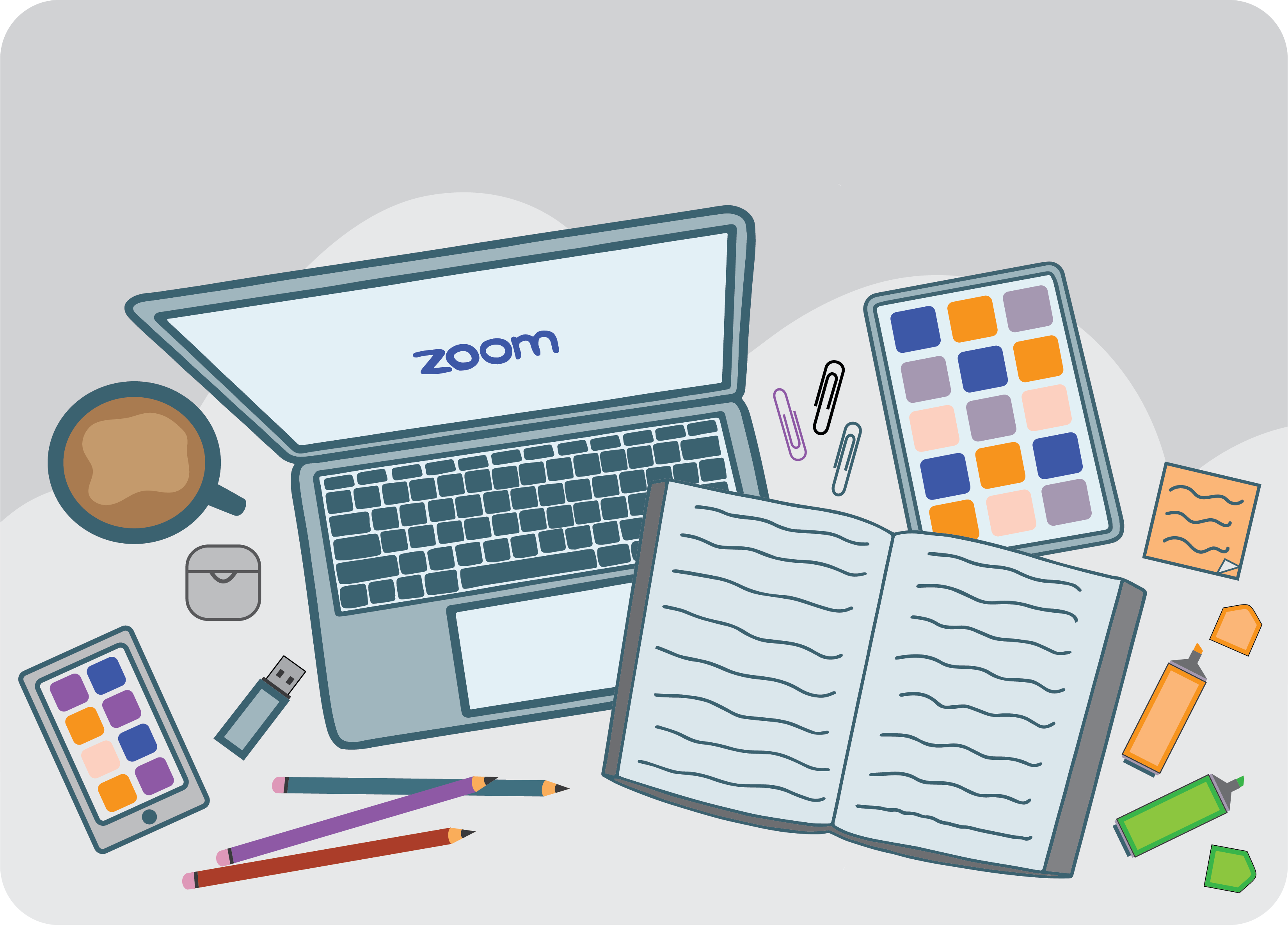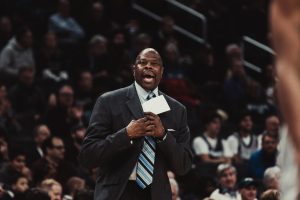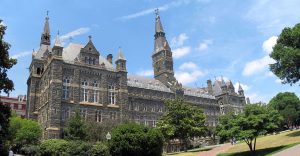“We had to go into survival mode.”
That’s how Mark Fisher, an assistant professor of government, described shifting to virtual instruction following the university’s coronavirus-spurred move online in March. He, like the rest of Georgetown’s instructors, faced an unprecedented challenge—to adapt their courses to be entirely virtual, halfway through a semester, during the largest public health crisis in nearly a century.
That task is still underway. Following Georgetown’s decision to extend online learning through the fall semester, the university’s teaching faculty has been forced to rethink how it connects with its students long-term; not only by incorporating new technologies, but also by balancing academics with the tumultuous and ever-present anxieties of living in America during a global pandemic. As students are deciding whether or not to move forward with an entirely virtual semester, instructors like Fisher are trying to build an experience more valuable than last semester’s final months could provide.
“I know on my side, the hardest part was seeing how inadequate the response was on my behalf. Knowing that I was employing really suboptimal pedagogical strategies, giving lectures I didn’t feel good about, and sort of watching myself stumble through it and knowing that there was little more that I could do,” Fisher said of the last few months of the spring semester. “It’s hard to do something in a mediocre way when you really want to do well.”
It’s common knowledge that classes in the latter half of the spring did not meet the traditional expectations of students—nor could they ever have, given the circumstances. Still, the shift has caused many to reconsider their attendance this fall. Nationally, leaves of absence doubled this past spring, and studies suggest that some universities could expect an enrollment drop as high as 20 percent this coming semester. For Hoyas frustrated by lowered financial aid packages, a leave of absence could be the most appealing decision.
The chaos of last semester, while suboptimal for all involved, was part of a nationwide move to terminate in-person classes and protect university communities’ health as the threat of the virus loomed large over campuses.
For Michelle Hardy, a doctoral student and instructor in the German Department, the administration’s decision to suspend in-person instruction in March, though logistically and financially difficult across the board, was a reassuring signal of support for the health and safety of her and her colleagues.
“I have several chronic illnesses and a physical disability. The threat of the virus is really huge for me, and I’m considered super high-risk. And so I was very happy that the university and everywhere else seemed to be taking it seriously and made it so I could stay home,” Hardy said.
While the shutdown protected faculty members’ physical health, the decision to press on with instruction in the spring still took a mental toll. Though they expressed appreciation for the support of the administration as classes transitioned, both Fisher and Hardy emphasized just how emotionally taxing continuing to teach was in the immediate aftermath of the shutdown.
It wasn’t just the challenges of Zoom and virtual discussions that weighed on instructors’ minds. They were facing the same concerns as students—quarantine, travel restrictions, and a world that had been reduced to, in many cases, just one or two rooms.
“I was not allowed to leave my apartment for almost eight weeks, and I live in a studio. So dealing with the mental health effect of that while also just trying to balance both my roles as a grad student and as an instructor of record was really difficult,” Hardy said.
Those heightened stress levels, when combined with concerns over students’ rapidly changing circumstances and personal health, hit hard for much of Georgetown’s faculty.
“The amount of stress and anxiety people were feeling made it really hard to have that extra mental space, that kind of bandwidth and emotional energy, to throw yourself into this professional project that really did require a pretty extraordinary effort,” Fisher said. “So much was being asked of us at the exact time when it felt we had the least to give.”
For Alisa Carse, an associate professor and director of graduate studies for Georgetown’s Philosophy Department, one antidote for that stress came from observing her students’ efforts to continue engaging. A philosophy seminar she taught last semester included students from Singapore, China, Ghana, Brazil, Saudi Arabia, and Spain. The shutdown caused it to fracture across the globe.
“I was deeply moved by the way my students—and many students at Georgetown—stepped up and really played ball. I had one student from Ghana who had to feed a meter to get internet access. And I had several students who had to do the whole class on their phone because they didn’t have bandwidth or, in one case, electricity,” she explained.
Despite the extraordinary circumstances, and partially because of them, Carse observed the students in her seminar grow closer as they overcame barriers to attend. That solidarity made her feel more personally connected to her class, even from thousands of miles away. “I felt like in some ways I entered my students’ lives in a different way because of the communications that were necessary, practically speaking. I learned about some of the challenges that they were dealing with in ways that I might not learn about challenges under ordinary circumstances.”
Even with that newfound sense of community, many instructors struggled to adapt their teaching strategies to a virtual space. Carse remarked that using Zoom was difficult at times because of how it stunted her ability to process moment-to-moment student responses and adjust accordingly.
“One of the hardest things for me honestly was after almost 30 years of teaching in the classroom, realizing I had developed many ways of reading my students—are they lost, are they confused, are they feeling shy—and all of a sudden I’m on screen and it’s much harder,” Carse said. “There’s much less data, and I haven’t developed the skills for reading my students: their moods, their levels of engagement, whether they’re feeling marginalized.”
Similarly, Hardy felt the environment of a Zoom call was ill-suited to natural discussion. In language learning seminars like the German courses she taught, those hindrances could be devastating.
“There’s that extra weird thing of navigating who gets to talk. In person, you can kind of see when someone’s gonna talk, you don’t even need to raise hands. Online, sometimes you can’t even see if someone’s raising their hands,” she said.
For Marissa Fond, an assistant teaching professor in the Linguistics Department, Zoom presented yet another challenge—it was exhausting.“What I didn’t anticipate was how physically tiring it was. There were many times where, after teaching three classes on Zoom in a row, I would feel physically depleted—which was odd because I was, of course, sitting,” she said.
These disruptions, the awkwardness and the exhaustion, collided in the spring to produce an environment which instructors knew was undesirable yet inevitable.
“I think the most difficult thing was knowing that we were going to be making a lot of mistakes and doing a lot of things suboptimally,” Fisher said. “We were feeling like we had to build the ship at sea, in a way that left little room for error but made error a necessary part of the process.”
Following the rocky end of the spring semester, it’s no wonder that many Georgetown students have reconsidered their attendance in the fall. Apart from their own turbulent spring experience, the university itself has also signaled its devaluing of the coming academic period—lowering tuition in recognition of inaccessible campus services and benefits.
To combat those low expectations, instructors have spent the summer course correcting for the coming academic year.
Fond remains optimistic about the ways technology can be incorporated into this fall’s instruction. She urged students to focus on the ways that online platforms could improve courses compared to their in-person counterparts.
“In a way, we have bought into the idea that virtual learning is inferior,” Fond said. “And honestly I think there are ways in which we can adjust our classes to be even better with some of this technology.”
Instructors gave much of the credit for these new strategies to the Center for New Designs in Learning and Scholarship (CNDLS), which has provided resources and online training to university instructors since the campus shutdown began. Many of CNDLS’s seminars are centered around one main strategic shift: forgoing the traditional.
To achieve this, professors have looked to new online platforms like Slack and Hypothesis, a collaborative annotation tool, to build an online experience more robust than the spring’s. For Fisher, CNDLS’s guidance in learning about these new tools has been vital.
“I think a lot of faculty members typically see their summer as somewhat sacred,” he said. “It’s this time to recharge, step away, do some other work. The CNDLS folks have really dedicated themselves and given their summer to training faculty in a really thoughtful, encouraging, inspiring way.”
Despite common caricatures of technologically inept professors, Fisher feels optimistic that environmental constraints could give rise to instructional innovation.
“It has forced us to really stop and rethink our pedagogy,” Fisher explained. “It’s easy to fall into certain patterns and keep doing what you’ve done in the past and not return to the fundamentals of what you’re trying to achieve in the classroom and how to do that best. I think in this sort of radical shift, we had to go back.”
Even with that optimism, however, concerns about inclusivity and accessibility still remain on instructors’ minds. Factors like disability and varying internet access, which affect student communities under normal circumstances, have only been exacerbated by the ongoing pandemic.
“I think this entire experience—that we’re all going through out of necessity—has been very illuminating in a lot of ways,” Fond said. “We’ve seen how inequities in higher ed—that have always been there—kind of percolated to a more visible surface.”
These inequities take many forms. Students with resource disadvantages—those without the opportunity to attend well-funded secondary schools, afford out-of-school tutoring, or acquire high-end devices—already faced a disproportionately uphill climb in their academic careers. For students with disabilities, imperfect accommodations were an additional discriminatory barrier to success on campus. The effects of these disparities grow even more apparent when learning remotely from home—assuming a student even has one to which they can safely return.
While instructors are aware of these inequities and hope to address them, they’re not sure they can properly tackle the issue without more administrative support.
“I went to a town hall about academic accommodations for the fall, they said faculty are being told to make things accessible,” Hardy said. “But what I would love to see is training, a webinar or something, where faculty could learn some of that.”
Every instructor interviewed placed a primacy on how the coronavirus pandemic disrupted student life. For many faculty members, their greatest concerns lie outside of the classroom.
“I’m much less worried about having meaningful academic experiences for students online—my students did such fantastic work, and I can tell you that as a whole, more students did excellent work in my spring classes than is usually my experience,” Carse said. “But college is so much more than what you did in class.”
For both first-years and returning students, the coronavirus put the brakes on one of the most formative social periods of their lives so far. While instructors have been working to mitigate the academic deficit caused by the pandemic, the challenge of building community could be even greater.
“What’s gonna be lost are those informal moments of conversation. The five minutes when you get to class and you’re just meeting the person sitting next to you, talking about whatever. And I think that’s especially disappointing for freshmen, because that’s a lot of the way you meet your friends and find your people,” Fisher said.
While Fisher and others plan on trying to replicate those small, casual moments for students this fall, much of that social experience will be lost in the months to come. Perhaps the greatest losses are the ones of which students will never be aware.
“I’ve had students meet each other, fall in love in my classes, and then marry later. Those are opportunities we can’t know about,” Carse admitted. “I have such a deep appreciation for what we’re missing that I will carry that appreciation with me after this period.”
Even without those moments, instructors are trying to pull together an experience worth engaging with, no matter the distance. To make that happen, they’re asking their students to be as communicative and as understanding as possible.
“I know on our side we’re trying as hard as possible to be charitable to students. To the extent possible, we just ask for the same courtesy back. That doesn’t mean to not offer constructive criticism if it’s warranted, but to offer it from a place assuming we’re trying really hard and doing the best we can,” Fisher said.
Perhaps most importantly, instructors want students to resist the despair that comes with navigating rocky and uncertain times. Though they are isolated for the moment, students will be able to see their community flourish again soon. In the meantime, they need only keep in touch with each other and trust that, through every step of the process, their instructors will work with them.
“There’s so much happening, it’s more than just switching to online,” Hardy said. “There’s so much going on that makes learning hard right now—but it also makes learning important. Having it might give us structure, make us think more critically about things. No matter what, nothing’s going to be perfect right now, but I feel like we can make a lot of positive come out of this.”





